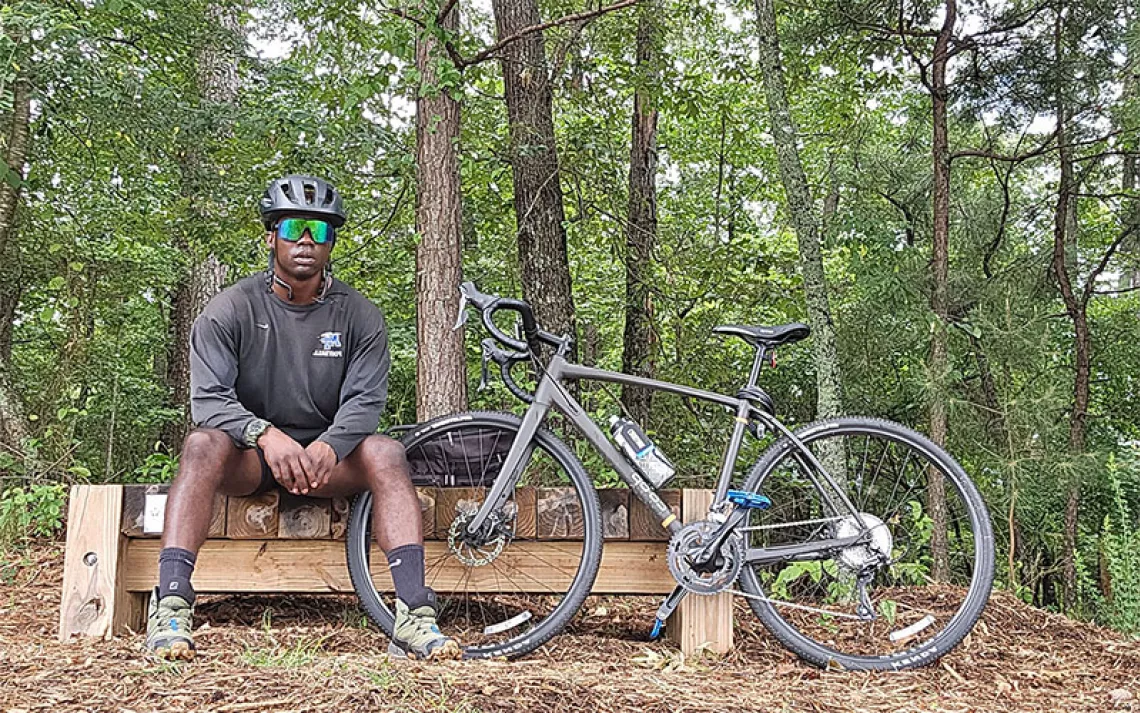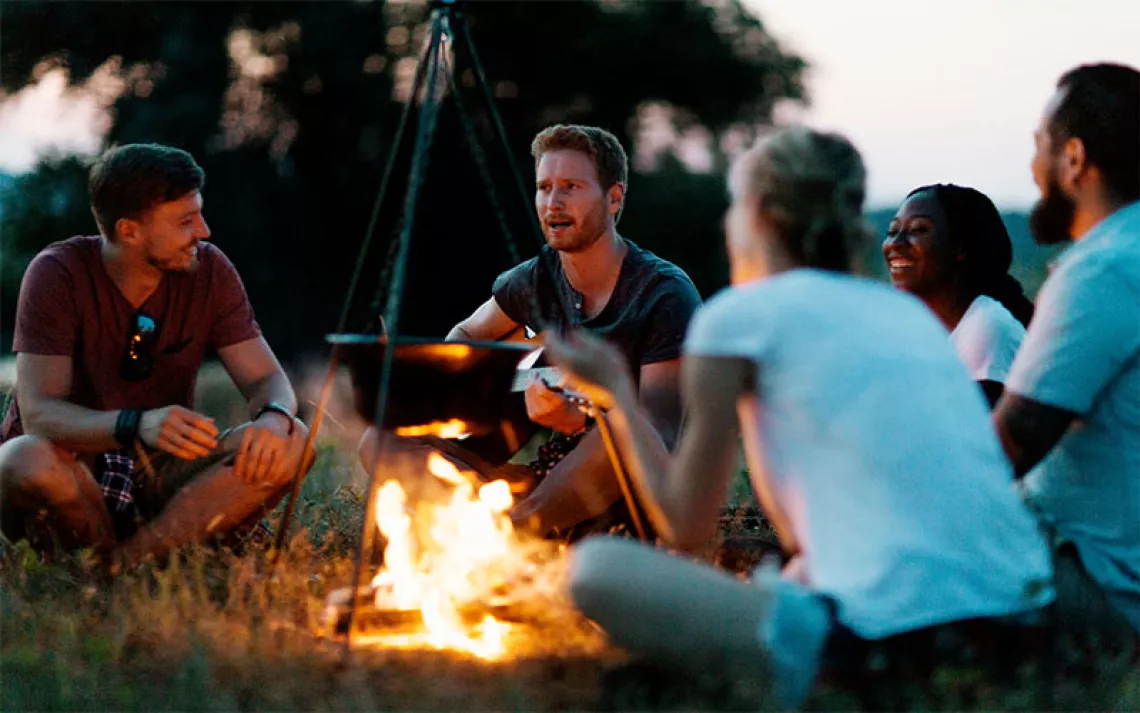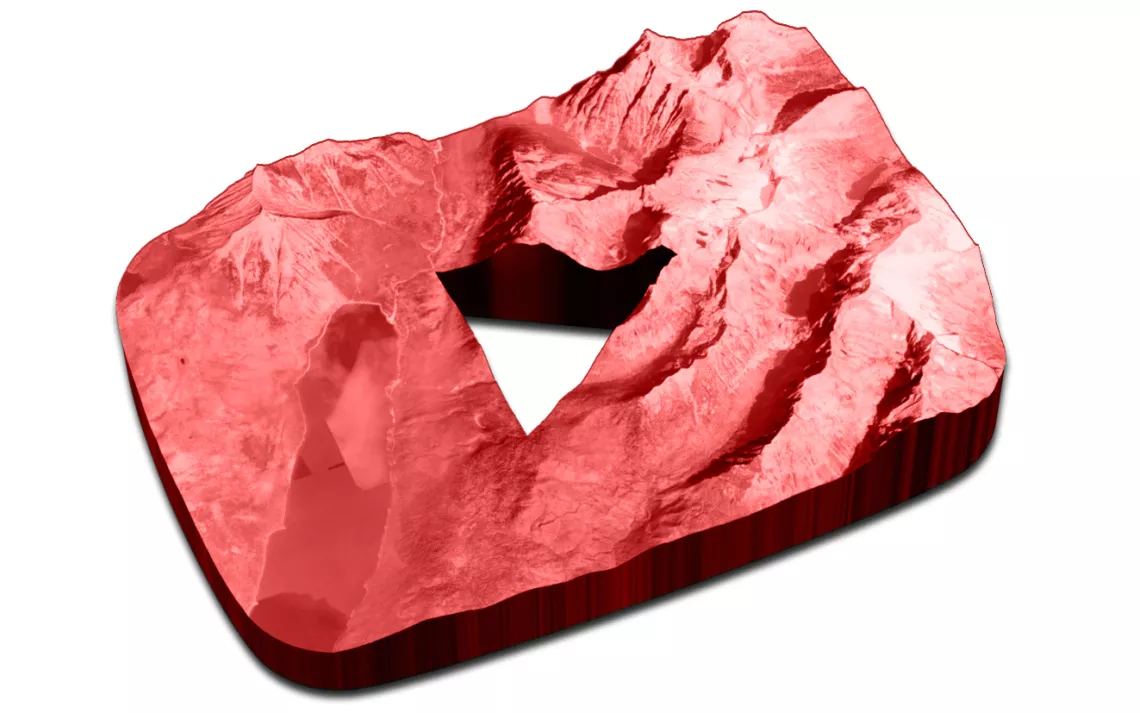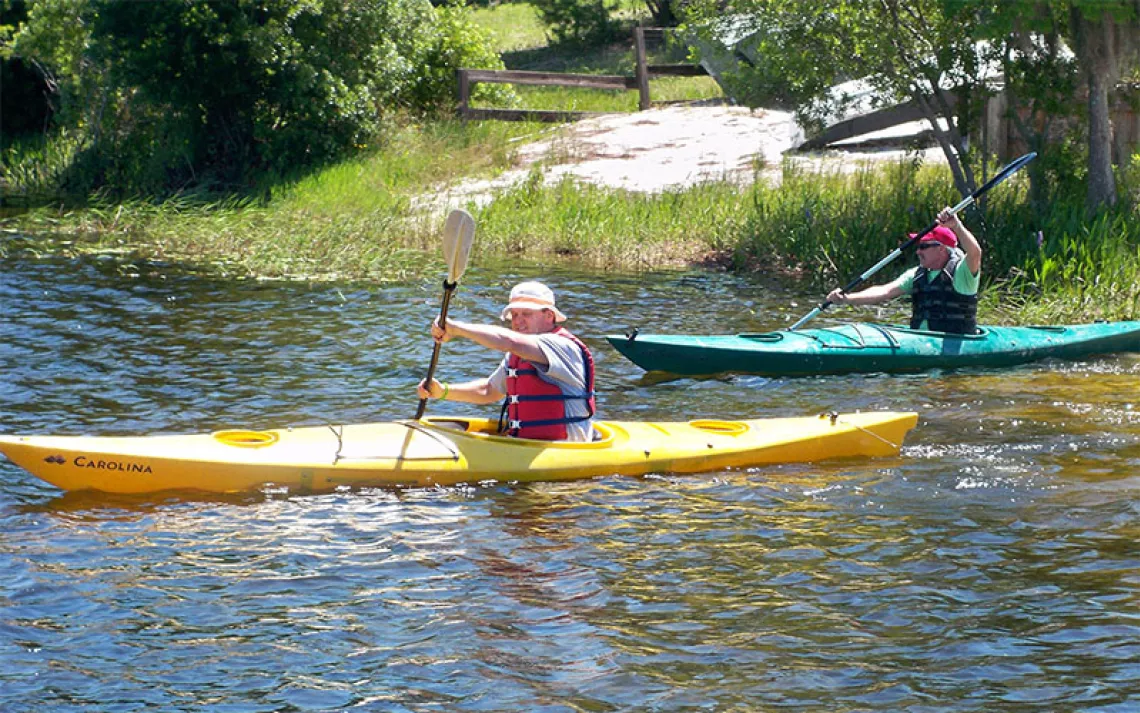Fly-Fishing in an Age of Unraveling
The election of a reality-show president drives a writer to crank up his fly-tying vise

Illustration by Marina Muun
I'm twisting my thumb and forefinger around a strand of waxed beige thread, entwining a tuft of rabbit fur into the fiber. The thread hangs from the curved shank of a fishhook. Once the fur is in place, I wrap the string six times around the shank, and it begins to resemble something: a creature. I look down at my workstation—grizzly hackle, brass beads, bucktail, tinsel Mylar, marabou, peacock herl, copper wire, chenille. This assemblage of odds and ends is about to take on a new form.
I spent my early years roaming around a series of ponds in southern Michigan. Fishing was how I connected to my world. Nobody else in the family fished, but my parents indulged me—even when I asked to be homeschooled for a year as my obsession was peaking. I dedicated some of that time to book learning. The rest of the time I spent at the ponds, where I was learning other lessons—about ecosystems and watersheds, weather and the seasons, predators and prey. I was learning about life cycles and die-offs, fragility and resilience. While in pursuit of the sunfish and bass that populated those murky bodies of water, I was home.
At times, my gear sat dormant. I didn't fish a single day while in college. Then I worked a summer job in Wyoming guiding river trips and rediscovered fly-fishing in the streams that coursed through Yellowstone National Park. I was hooked all over again.
After moving to New Orleans, I discovered a rubble-strewn swoop of the Mississippi River, along with its surprise catches and eerie riparian encounters. This became a new, uncanny kind of home: alligators in the shallows, grass shrimp skittering over my toes, water moccasins playing around my fly line, the stain of the river on my skin that took days to wash off.
I had never been interested in tying my own flies. It seemed like a lot of fuss that required extra tools and supplies. Easier, I always thought, just to buy them. Then, in 2016, two things happened: Donald Trump and the fly-tying vise my wife gave me for Christmas.
In the immediate days after the election, I felt disbelief and shock. In the weeks and months that followed, an unfamiliar kind of helplessness washed over me as the new administration began attacking everything from climate science and national monuments to its own EPA. For eight years, it seemed, the country had been on a path to respond to the climate crisis that defines our age, a crisis of our own making. And now. . . . I set up the fly-tying vise one winter day and started clumsily wrapping thread around hooks.
Soon I was collecting stray loon feathers from the beach and deer hair from the woods, imagining them taking on freshly animated forms in my fingertips. I found myself gravitating back to my workstation at the end of each dizzying day of political upheaval to work it out.
Tying flies, I soon discovered, can't be rushed. It's not something you do while multitasking. Each bit of material and each layer on the hook takes its own time to come together. For a while it looks like nothing, or just an amorphous lump of miscellaneous stuff, and then you pull the thread tight and the fly pops to life as a minnow or a tiny insect larva, suspended in the air but ready to swim. Focusing on a few cubic centimeters of intricately arranged materials—this is a space in which I can dwell.
My reaction isn't an intellectual one; I am acting on muscle memory from years of learning in the great outdoors. The act of fishing is only a small part of what makes it so important—bundled into this time are countless hours of waiting, observing other creatures, and inhabiting delicate landscapes. Tying flies has become another way to engage with other species and fragile ecosystems. It's about going back to what formed, and continues to form, my deepest-held commitments. It's about coming home.
This article appeared in the January/February 2018 edition with the headline "Zen and the Art of Tying Flies."
 The Magazine of The Sierra Club
The Magazine of The Sierra Club



